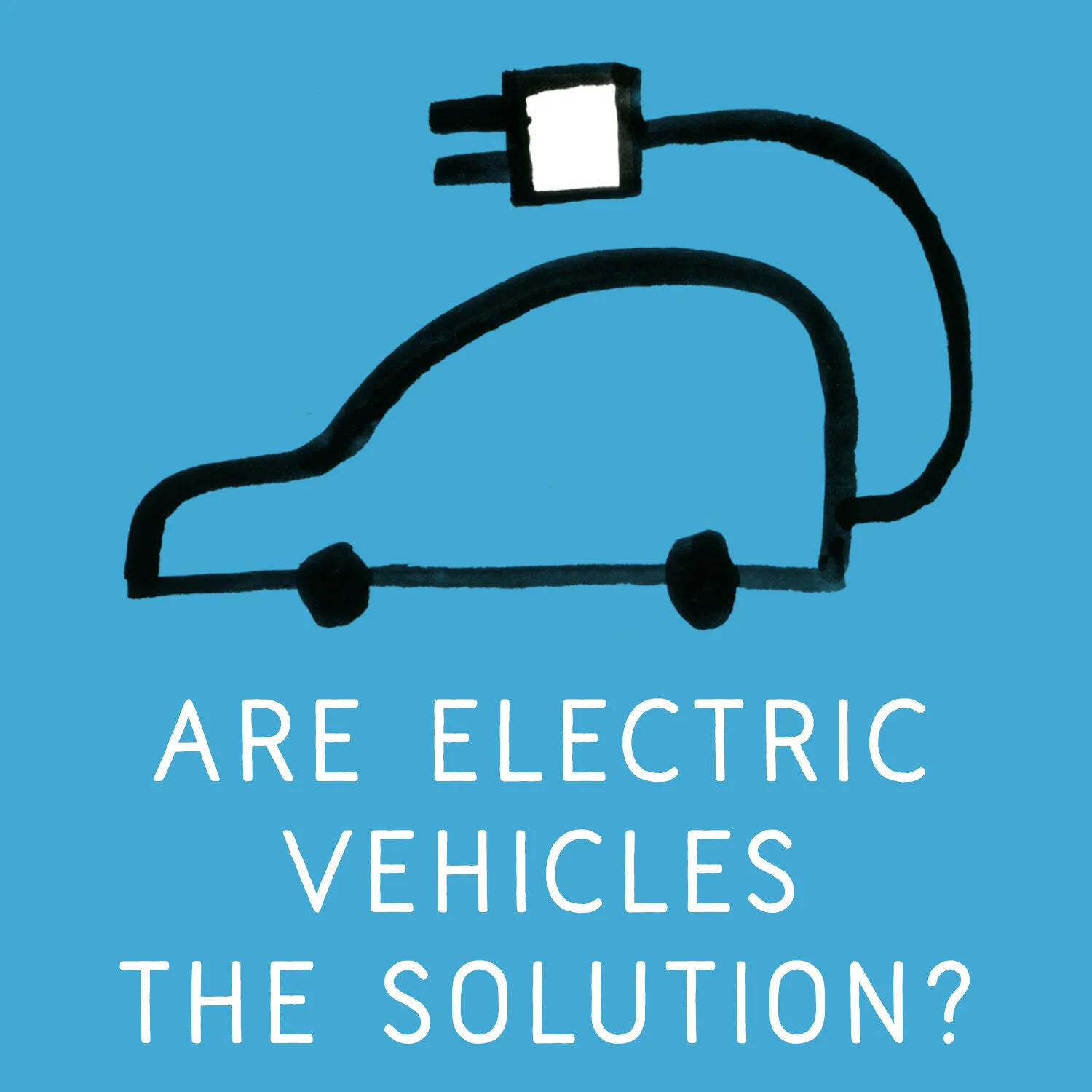The Future Is Electric
Many of the ways we use energy are already electrified: lighting, washing machines, fridges, mills, and more. Your world would look pretty strange if this wasn’t true. In transport, trains are increasingly becoming electrified and this was already true of trams.
The reason electrification of end-use of almost all energy needs is inevitable is that it is much more efficient than burning fuels, including fossil fuels. It also future proofs our energy, as electricity can come from any current or future generation source.
It also means that as the grid gets greener - with the growth of renewables in particular - so does the electricity that is used to power our lives and work.
A long time coming
This transition has been over a century in the making. Lighting, household equipment (fridges, washing machines, food mixers, etc) and much more have each in turn become electrified.
Michael Faraday, who discovered electromagnetic induction in 1831 (the basis for electric motors), and Lord Kelvin who proposed heat pumps for heating in 1852, would both be surprised we are still burning fossil fuels to get around and heat our homes.
Fossil fuel powered cars and boilers are much less efficient than their electric alternatives, and it is only the entrenched power of the fossil fuel industry and its backers that has held back the transition to clean energy.
Michael Faraday c. 1855-1860 (Image: Photograph by Maull & Polyblank. Wellcome V0026348.jpg - CC BY 4.0)
The politics of delay
For decades fossil fuel interests have funded outright denial of man-made climate change, but in recent years they have become more devious, funding PR and opinion pieces aimed at delaying the adoption of green energy solutions, as revealed here, while practising greenwashing.
In response to the climate crisis we now need to reject these delaying tactics, and accelerate the energy transition. Electrification is key to this.
Transport future
Robert Llewellyn - the founder of the world leading Electric Vehicle (EV) show Fully Charged - gave a talk at the Transport Festival in Nailsworth on 25th June 2023. He prefaced his advocacy for electric cars with a call to move away from our dependence on cars, saying that private cars are a last resort method of transport – after walking, cycling, bus, train, taxi-sharing and car sharing. See our Blog Robert Llewellyn Answers yours questions.
We need better public transport, such as the EV buses that service Harrogate.
The phasing out of petrol/ diesel cars is an opportunity to take a fresh look at transport in general, and politicians need to be bolder and more imaginative. Moving from 30 million petrol/ diesel cars in the UK to 30 million EVs in not necessarily the right answer, especially for those who cannot afford a car, but zero EVs is also not the answer!
There are many myths surrounding EVs that we have discussed before. Please see 11 EV Myths
Whatever one’s political views, EVs will be part of the our transport future, but we would advocate for a fair transition, where everyone has a voice in that future.
Consumers should and will increasingly ignore the disinformation on EVs because, as the Climate Change Committe (CCC) has noted “Motorists stand to see significant cuts in the costs of driving as they shift to electric vehicles” (CCC, 6th Carbon Budget). This is simply the consequence of the much greater efficiency and simplicity of EVs.
Air quality
It also means that air quality will improve. The particulates and other exhaust gases from petrol/ diesel cars are a severe health hazard we have turned a blind eye to for far too long. It’s time to clean up our towns and cities, and electrifying all our road transport (cars, buses and lorries) will be better for the planet as well as for air quality.
For those who can walk and cycle to get around, this is great and to be encouraged, but in our hilly town of Nailsworth, cars will be unlikely to disappear for many who rely on them.
Heating future
Heat pumps can heat any building that a gas boiler can heat. A comprehensive study of UK buildings concluded that All housing types are suitable for heat pumps, finds Electrification of Heat project
“The project has not identified any particular type or age of property that cannot have a successful heat pump installation. The suggestion that there are particular home archetypes in Britain that are “unsuitable” for heat pumps is not supported by project experience and data” (Catalpult, 2021/ 22)
Claims to the contrary are just hearsay that is often repeated - but that doesn’t make it true. Please see our plain English guide Demystifying Heat Pumps.
Credit: Cotswold Energy Group case study
Another more recent study by Nesta (2023) of householders who have had a heat pump installed, found that satisfaction with heat pumps was high, and just as high in older properties. Deputy Director of Nesta, Katy King, concluded that
“the overwhelming majority of heat pump users are satisfied with space and hot water heating, safety, reliability and noise – it’s time to put to rest outdated concerns about the heat pumps.”
How affordable are heat pumps?
Nesta provide a calculator for estimating the cost of a heat pump: https://www.nesta.org.uk/project-updates/a-calculator-to-estimate-the-cost-of-a-heat-pump/
With the Government’s grant of £7,500, heat pumps are within the reach of many households, and companies like Octopus are providing really competitive deals which are also linked to attractive tarifs.
It’s worth noting that for those living in flat may be able to use what are called ‘Air to Air’ heat pumps (that are like air-conditioners in reverse) that are much cheaper than the usual ‘Air to Water’ systems (which send hot water around radiators in the home); but a separate unit for providing hot water in the kitchen will be required in this case.
What about hydrogen?
Some are suggesting we should consider hydrogen boilers instead of heat pumps. None of 32 independent studies reviewed in ‘Is heating homes with hydrogen all but a pipe dream? An evidence review’ (2022) saw a significant role for hydrogen in heating.
Within a UK setting, the Committee on Climate Change (CCC) in their 6th Carbon Budget stated (based on very detailed modelling of scenarios, costs and risks) also conclude that hydrogen will only play a marginal role in heating:
‘By 2030 37% of public and commercial heat demand is met by low-carbon sources. Of this low-carbon heat demand 65% is met by heat pumps, 32% district heating and 3% biomass. By 2050 all heat demand is met by low-carbon sources of which 52% is heat pumps, 42% is district heat, 5% is hydrogen boilers and around 1% is new direct electric heating.’
So we should not be looking at hydrogen to replace natural gas. The efficiency of heat pumps means that if we used wind power to create hydrogen to burn in our homes, we’d need 5 or 6 times as many wind turbines than if we just sent the electricity directly to heat pumps for our homes. LETI (Low Energy Transformation Initiative) agree, concluding that heat pumps are a far superior option for home heating than hydrogen; see their report Hydrogen: A decarbonisation route for heat in buildings?”, LETI, February 2021
Even oil & gas majors are now admitting that hydrogen will play a minor role in both heating and cars - see for example BP: Clean hydrogen will play a minimal role in the decarbonisation of cars and space heating.
There is a crucial role for hydrogen in areas such as energy storage and fertilizer production, as Michael Leibreich has catalogued, just not in transport and heating.
Isn’t insulation more important?
Insulation and draught-proofing are very important and some kinds of it are cheap and easy to fit, such as loft insulation and brushes on sash windows. NailsworthCAN have done a lot to promote practical measures to help in retrofitting homes to make them more energy efficient by reducing heat loss; see Getting started with retrofit.
But many people will find that the more intensive retrofit measures such as external wall insulation or changing the internal fabric of the building can take a lot of time, money and disruption to complete. And in any case they shouldn’t be used as an argument for delaying getting a heat pump. It has been a mantra in retrofit circles to say ‘fabric first’. Maybe a more nuanced mantra should be ‘some fabric first, but don’t forget a heat pump!’. A heat pump will have the greatest impact on a householder’s carbon footprint, and this view has been endorsed by Nesta in their report Delivering Clean Heat: A Policy Plan. This graphic shows that relative to its capital cost, an air-source heat pump far outperforms any other retrofit measure in delivering carbon reductions.
An older Nailsworth building case study
Returning to heat pumps, those that claim they cannot heat older buildings should take a look at this example - based in Nailsworth - a 1805 Grade 2 Listed dwelling
The householders changed the heating system from a 25 year old gas boiler to a new Air Source Heat Pump (ASHP) at the end of 2021. For every unit of electricity that has powered the heat pump during 2022, the heat pump has delivered 3.3 units of heat, and a comfortable home. Even when it was -5°C outside in winter 22/23 the desired internal temperatures were maintained. Even with unit prices that disadvantage electricity compared to gas, it has still been cheaper to run the ASHP than if they’d stayed with their old gas boiler. This is fact, not opinion or hearsay.
What about the rest?
Other areas that use energy that we directly experience as householders will be electrified over coming years. Induction hobs, for example, are now just as responsive as gas hobs, but without the air pollution issues that have been widely ignored. Garden machinery such as lawn mowers are now also transitioning to being battery powered. Not everyone will switch over immediately of course, but it is inevitable that the transition will occur as the prices for electric equipment lower, and the petrol powered equipment is finally retired. Many may choose to make the change earlier.
Industry
For other area of industrial scale such as steel-making and international air travel, there remains some debate over whether or how soon they will become fully electrified, or alternatively use synthetic chemicals (such as hydrogen) made using renewable electricity. But innovation on batteries is advancing at pace, with them becoming lighter and more energy dense, so views need to keep up to date with these improvements.
Recent research suggests that 80% of industrial processes could be directly electrified with current technology, and almost all processes with technology under development.
Transport and Home energy key focus areas
So let us not be distracted by the hard to decarbonise sectors of the economy.
In the short-medium term the majority of our energy use as a society can readily transition to electrical power using existing technology, so we need to press ahead with this ‘low hanging fruit’. The key areas we have already discussed are land transport (using electric vehicles for bikes, cars, buses, trains, trams and even lorries) and heating (using heat pumps), which together make up a significant percentage of our domestic carbon footprint (over 40% for Nailsworth; see the Community Carbon Calculator).
NailsworthCAN supporting the Nailsworth Transport Festival 2023 with stalls showing off electrification, surveying the public, local owner’s EVs, eBikes, and more.





